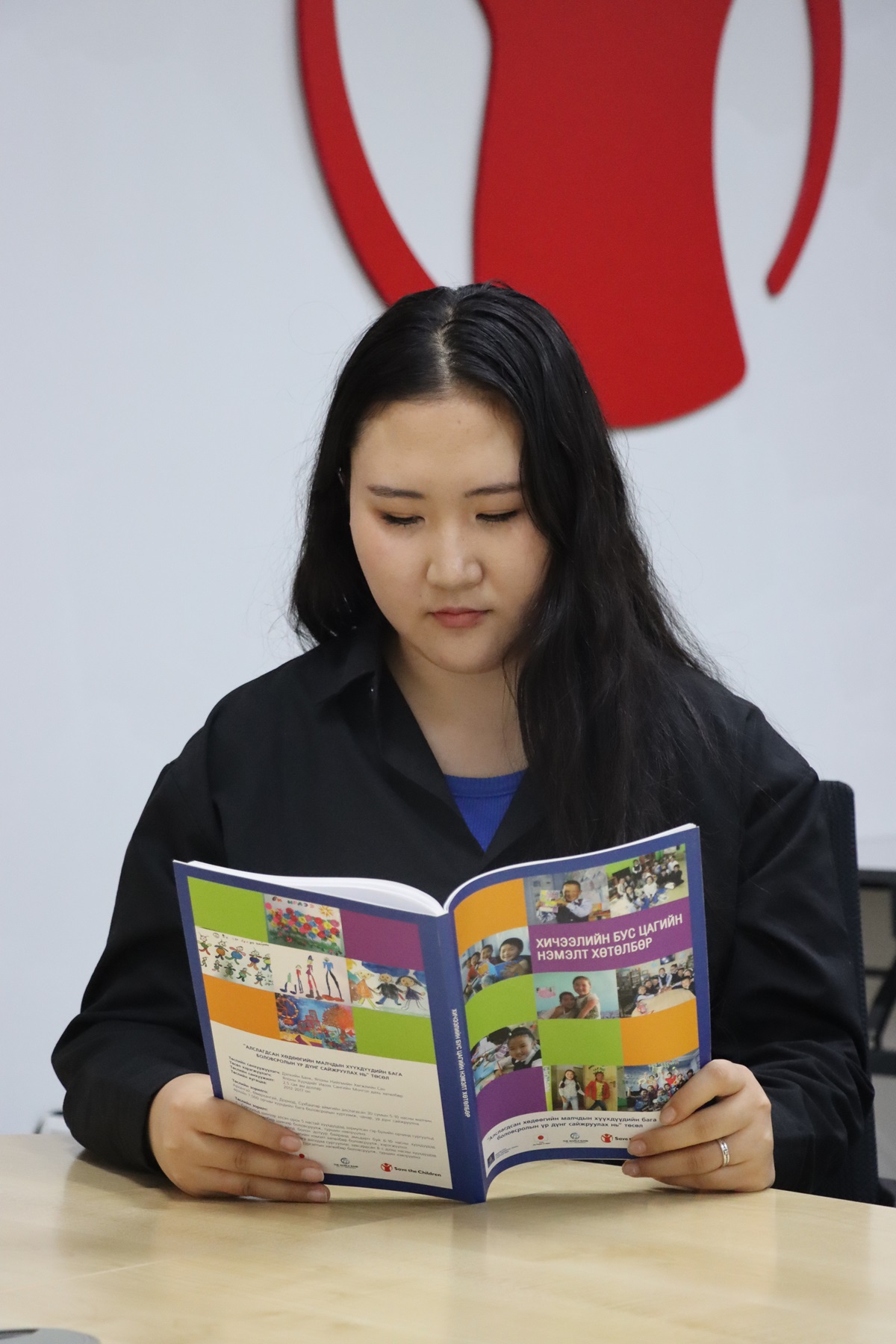A Herder’s Daughter’s Journey to Social Work
Saytsetseg T, a third-year Social Work student at the Mongolian University of Science and Technology, shared her childhood achievements and personal transformation story while interning with the Child Protection Program at Save the Children.
Born into a herding family in Tsagaan-Ovoo soum, Dornod aimaig, Saytsetseg began her education in 2010 at the age of five. Since her family lived in the countryside to tend their livestock, she moved into her school dormitory to pursue her studies. It was during this time that her journey and Save the Children crossed paths through the launch of the project “Improving Primary Education Outcomes for the Most Vulnerable Children in Rural Mongolia” in her soum.
Despite her young age at the time, Saytsetseg never forgot the project’s name, as it left a lasting impression on her early school memories. “I still remember the older brothers and sisters in red vests coming in the white car to give younger children book and toy kits and set up the child development room,” she recalls. “At that time, toys were amazing for children in rural areas. The books were full of fun activities. It made learning more exciting.”

The project focused on supporting children in dormitories ans those unable to attend preschool. It introduced several child-friendly innovations, including:
– “Child Development Room” in school dormitories equipped with educational materials and “Extracurricular after-school program”,
– “I Can” school readiness program for five-year-old children,
– “You Are the Teacher”, a home-learning guide to help parents teach their children,
– “My Book Haven”, a rotating lending system for books and toy kits that children could take home and use with their families for 10 to 14 days before returning.
These kits were designed to support child development, spark motivation and enthusiasm for learning, and build essential skills and self-confidence. They contained 105 types of books and 35 kinds of toys, all carefully curated to suit the age and developmental needs of young children.
Saytsetseg lived in the dormitory through 7th grade during the project period. By 6th grade, she had begun leading after-school activities for younger students and assisting teachers in guiding evening exercises. With few other extracurricular opportunities at that time, children were very active and eager to join.
Thanks to the project, the dormitory became a vibrant and inviting space, equipped with large televisions, books, and toys. Children spent their spare time to draw pictures, write poems, and complete various after-school developmental tasks that supported their growth. For Saytsetseg, the experience was life-changing. “I was a very shy child who did not enjoy going to school at first,” she reflected. But through the project, she made many new friends and discovered new interests. These experiences helped her become more confident and expressive. She started to participate in school activities and engage with others. “Those memories and lessons stayed with me and inspired my career path,” she said.
The project made positive impacts on many children like Saytsetseg in Tsagaan-Ovoo soum. Today, she has come full circle – interning at Save the Children and revisting the very project that once supported her. Saytsetseg was excited to come across the same “Extracurricular after-school program” book she had used as a child.
The success of this initiative continues to ripple outward. The home-based school preparation program has since been officially adopted by Mongolia’s Ministry of Education and Science as the “Early Childhood Development Program” for children of herder families who cannot access preschool. Furthermore, the Mongolian National University of Education now incorporates the project’s methodology into its preschool teacher training curriculum.
The project “Improving Primary Education Outcomes for the Most Vulnerable Children in Rural Mongolia” was implemented by Save the Children from 2012 to 2017. It was funded by the Japanese Social Development Fund through World Bank. This initiative took innovative and inclusive approach to engage key stakeholders in child development through creative book-and-toy kit and parent-led activities, supported from school librarians and local education experts. As a result, 1,545 children aged 5-6 for school from 30 remote soums in Arkhangai, Dornod, Sukhbaatar, and Uvurkhangai aimags were successfully prepared for school. Overall, the project, reached over 8,000 children and involved more than 20,000 teachers, parents, and local officials.
For more details about the project results, please see the link below:

